Abstract
Comprehension of complex controlled vocabularies is often difficult. We present a method, facilitated by an object-oriented database, for depicting such a vocabulary (the Medical Entities Dictionary (MED) from the Columbia-Presbyterian Medical Center) in a schematic way which uses a sparse inheritance network of area classes. The resulting Object Oriented Health Vocabulary repository (OOHVR) allows visualization of the 43,000 MED concepts as 90 area classes. This view has provided valuable information to those responsible with maintaining the MED. As a result, the MED organization has been improved and some previously-unrecognized errors and inconsistencies have been removed. We believe that this schematic approach allows improved comprehension of the gestalt of large controlled medical vocabulary.
Full text
PDF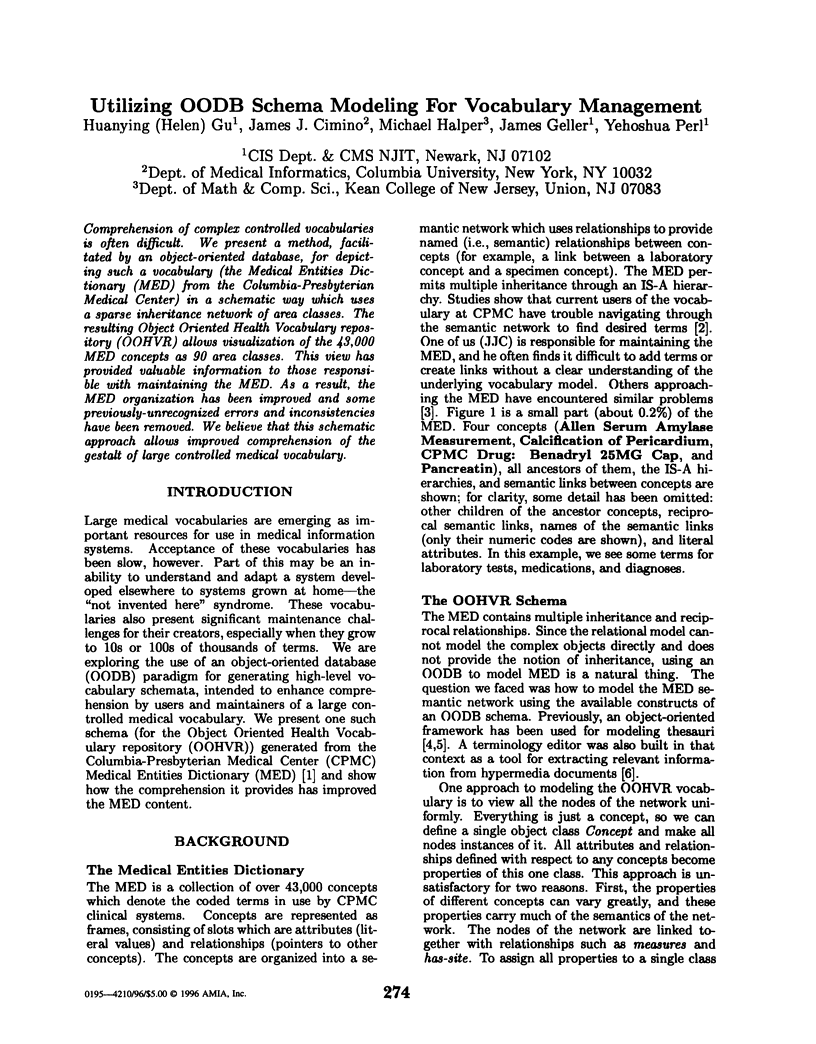
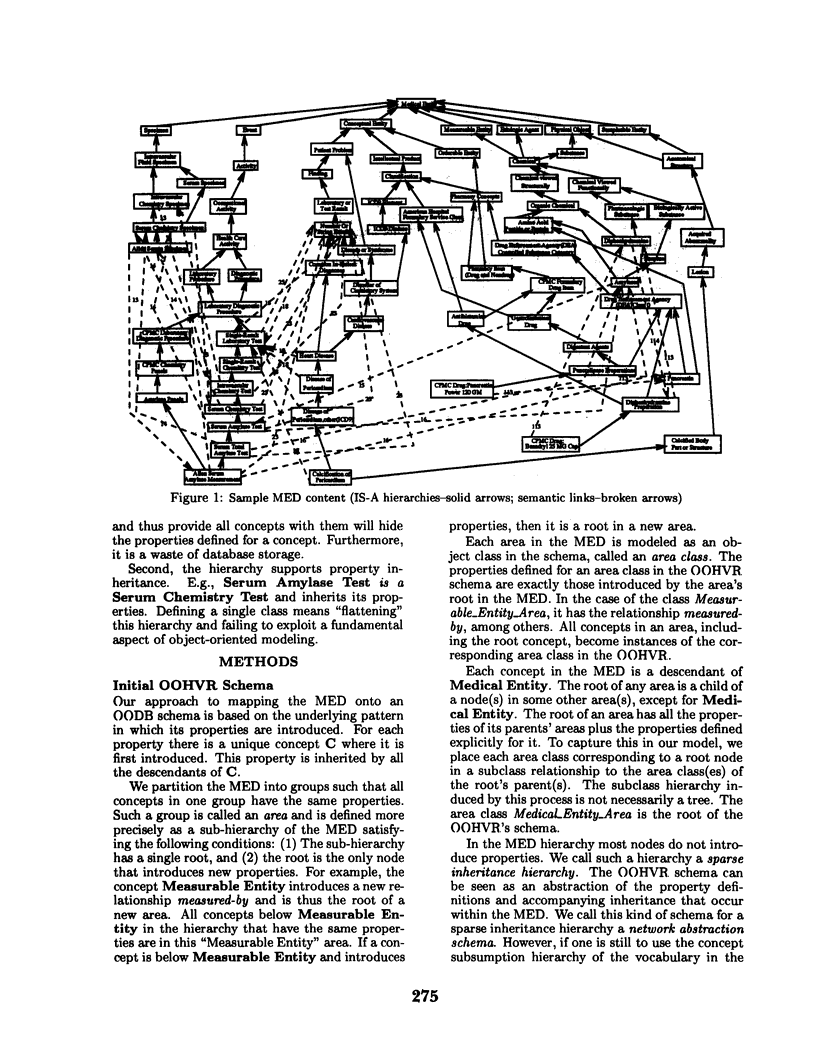
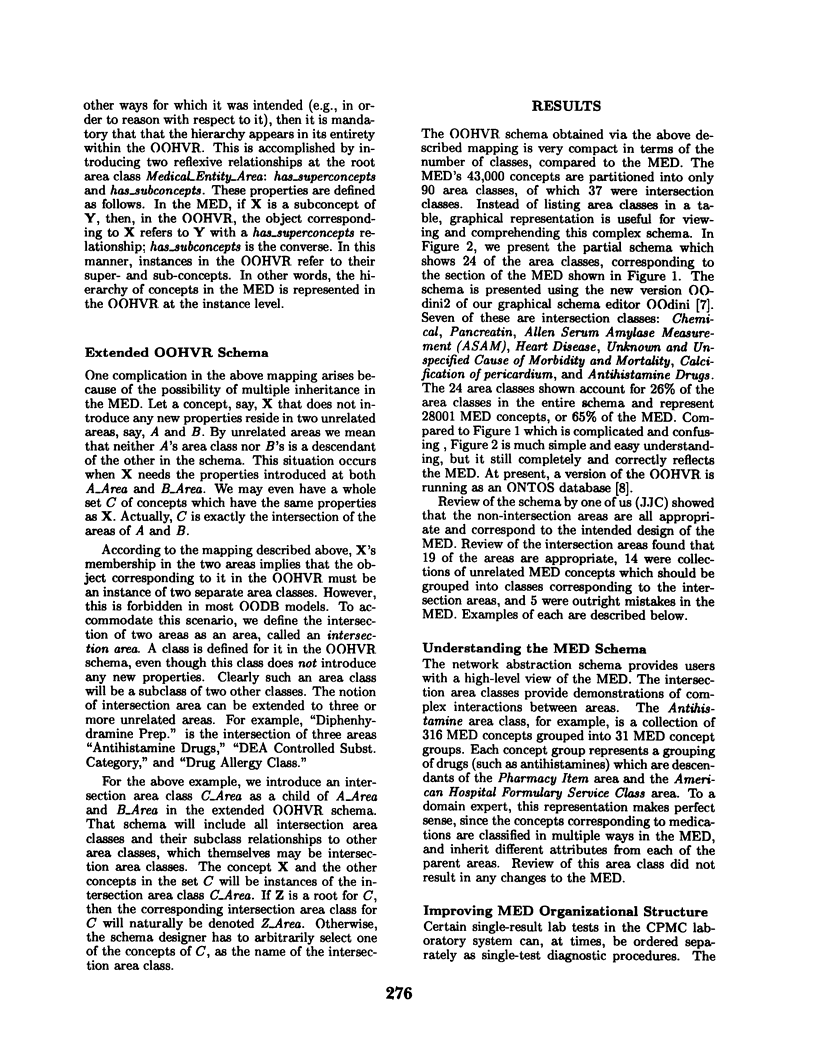
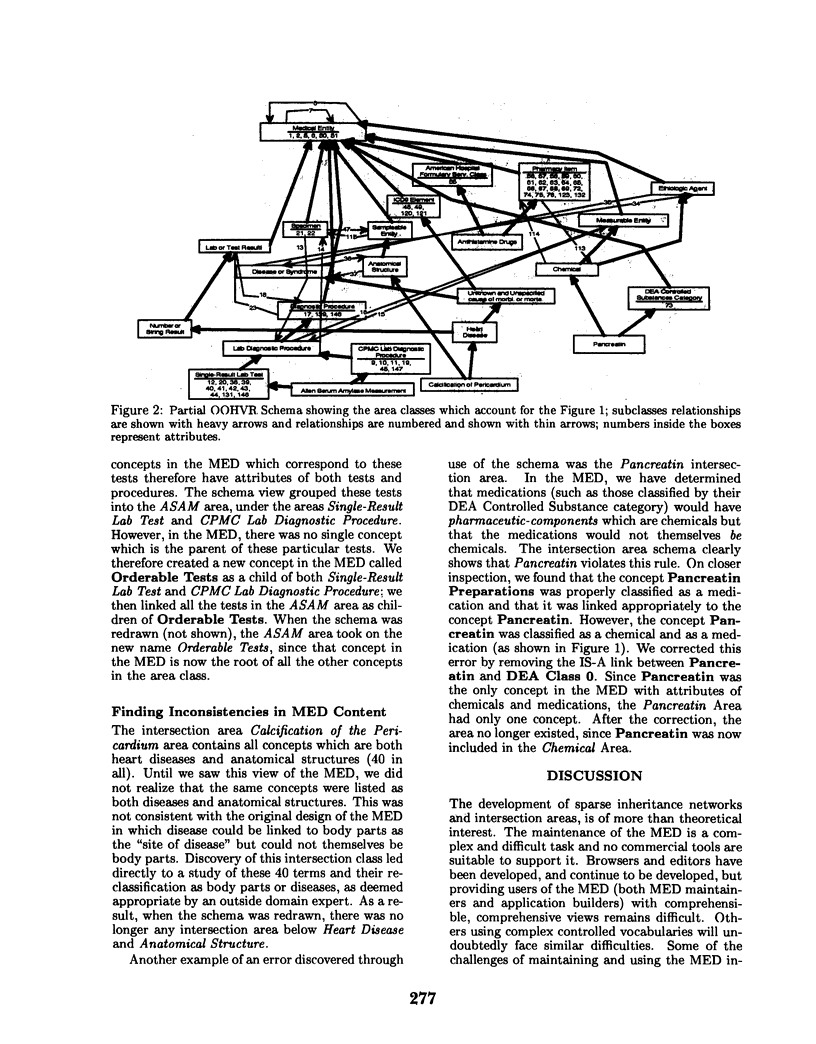
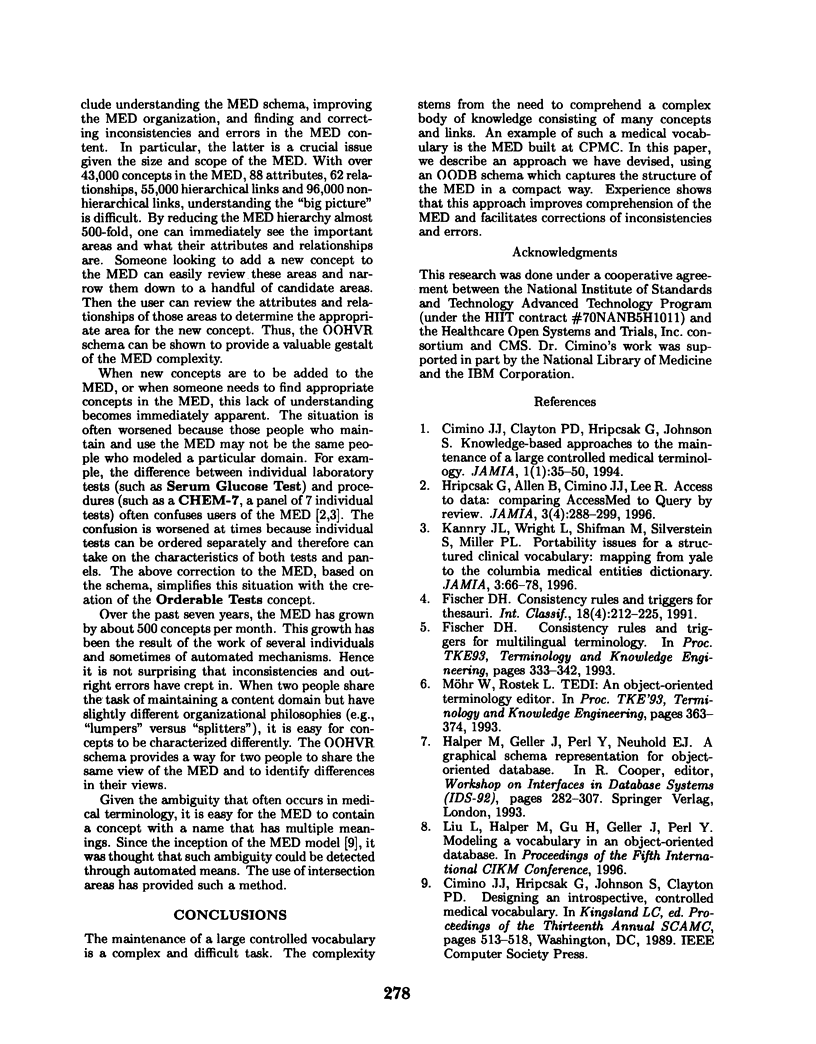
Selected References
These references are in PubMed. This may not be the complete list of references from this article.
- Cimino J. J., Clayton P. D., Hripcsak G., Johnson S. B. Knowledge-based approaches to the maintenance of a large controlled medical terminology. J Am Med Inform Assoc. 1994 Jan-Feb;1(1):35–50. doi: 10.1136/jamia.1994.95236135. [DOI] [PMC free article] [PubMed] [Google Scholar]
- Hripcsak G., Allen B., Cimino J. J., Lee R. Access to data: comparing AccessMed with Query by Review. J Am Med Inform Assoc. 1996 Jul-Aug;3(4):288–299. doi: 10.1136/jamia.1996.96413137. [DOI] [PMC free article] [PubMed] [Google Scholar]
- Kannry J. L., Wright L., Shifman M., Silverstein S., Miller P. L. Portability issues for a structured clinical vocabulary: mapping from Yale to the Columbia medical entities dictionary. J Am Med Inform Assoc. 1996 Jan-Feb;3(1):66–78. doi: 10.1136/jamia.1996.96342650. [DOI] [PMC free article] [PubMed] [Google Scholar]


